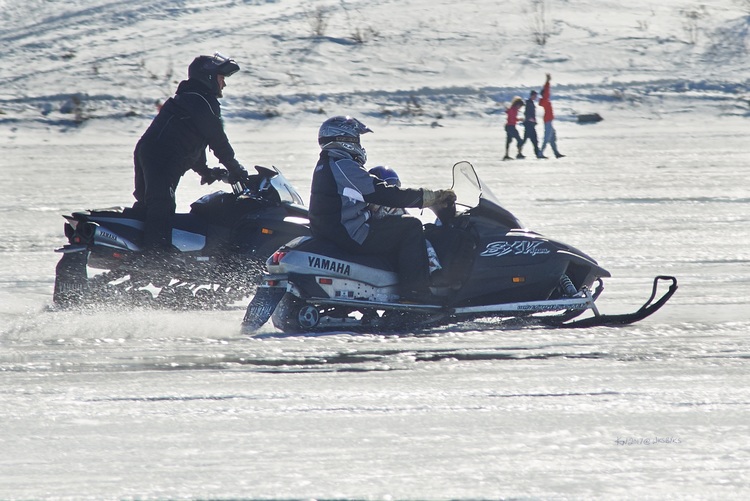
Every year, people enjoy activities that only winter can offer. Activities include skiing, skating, sledding, snowmobiling, and many more. Unfortunately, these fun and exhilarating activities can lead to injuries.
Common winter injuries which lead to unexpected trips to the hospital include sprains, strains, dislocations, concussions, and fractures. It’s important to understand what you can do to prevent a trip to your local hospital.
Injury Types
Concussion – This can be a significant brain injury that affects how your brain functions. Common but temporary effects include headaches and difficulty with concentration, memory, balance, and coordination. Depending on the severity of the impact to your head, it can even cause unconsciousness. Unfortunately, I’ve been on both the receiving and giving end of concussions. Watching a high school friend lay lifeless on the ice was scary. Fortunately, today there’s so much more awareness and emphasis on caring for and treating people with concussions. Skiing, snowboarding, and hockey are some of the winter sports where this injury is common.
Knee injuries – Our knees are the workhorses of our bodies. They allow us to perform everyday activities like walking. They provide our bodies with cushion and they absorb the shock we put on them. Knee injuries are very common and can occur at any time. However, participating in intense activities, like skiing, snowboarding, or skating can put a lot of pressure on them, leading to injury. Injuries can include torn ligaments, torn meniscus, fractured kneecap, or dislocation.
Ankle sprains and fractures – Ankle injuries can happen when we least expect it. Stepping onto an uneven surface, tripping, twisting, and slipping are some of the common actions that lead to injury. Ice skating, hockey, and snowboarding are some of the winter sports where this injury is common.
Neck injuries – Neck injuries can occur due to a sudden stop which causes your neck to hyperextend. While I’ve never suffered a neck injury, I always think of snowmobiling as a kid. My buddies and I were always crashing into each other because we followed to closely. If you’re not expecting the impact, it’s quite a jolt.
Back injuries – I take my healthy back for granted. A muscle strain can be painful and make it difficult to carryout simple daily activities. Back injuries occur from bending, jolting, or twisting during a fall. A significant crash or fall can lead to more severe injuries to your spine or disks, which could lead to partial or full paralysis. If you enjoy skiing, you’re more prone to these injuries. Take extra precaution to prevent a back injury.
Dislocated shoulder – Falling on a hard surface, like ice, tumbling down a ski hill, or running into a tree are all common ways you can dislocate a shoulder. Dislocating a shoulder can be very painful. If this happens, seek medical attention to prevent further complications.
Facts and Figures
According to the U.S. Consumer Product Safety Commission, 246,000 people were injured in 2015 as a result of participating in winter sports.
| Number of injuries | Winter sport |
| 88,000 | Skiing |
| 61,000 | Snowboarding |
| 50,000 | Ice skating |
| 47,000 | Sledding, tobogganing, and snow tubing |
Injury Prevention Tips
1. Take breaks. As your body becomes tired, it becomes more susceptible to injury. Even if you don’t feel tired, taking consistent breaks is a good way to rest, replenish your energy, and rehydrate.
2. Pay attention to weather. Snow blindness, whiteouts, windchills, and sun glare can make winter sports dangerous. If these conditions are forecasted, it may be best to stay home. Another benefit of checking the weather is it helps you chose proper clothing and equipment. Lastly, always wear glasses or goggles to protect your eyes from the sun.
3. Enjoy with friends. It’s always more fun participating in activities with friends. If you’re severely injured on a ski slope, you may not be able to get help for yourself. A nearby friend may be able to flag someone down for help.
4. Stay in shape. Winter sports are a lot of fun but they’re also physically demanding. Like many physical activities, you can use muscles you didn’t know you had. Staying in shape can help prevent injuries.
5. Warm up appropriately. Not only should you be physically fit, spending time warming up is critical to preventing injuries. Cold weather makes muscles, ligaments, and tendons tighten. Engage in light exercises and gentle stretching for approximately 5-10 minutes beforehand.
6. Follow the rules. There’s an old saying that rules are meant to be broken. When it comes to winter sports, following the rules at your favorite ski hill is in your best interest. Always stay on marked ski and snowboard trails. While venturing off may feel invigorating, changes in landscape and weather can lead to serious injuries quickly.
7. Don’t push yourself beyond your skill level. Understand your strengths and weakness and participate in winter sports accordingly. If you’ve never skied before, consider taking a lesson versus going right out onto the slopes. If you’re trying snowshoeing for the first time, consider walking in your yard before hitting the trails.
8. Drink plenty of water. It’s important to drink water before, during, and after the activity. Even though it’s cold, you still sweat.
9. Learn the art of falling. If you’re learning to ski, instructors may be able to teach you how to fall. Shoulder, elbow, and wrist injuries can result because of your body stiffening and trying to brace for impact.
10. Acclimate yourself to the area. If you’re at a new ski hill or skating on new lake, take time to become familiar with the area. Thin ice or a big rock can be life threatening. Knowing what’s around you is key to staying safe.
Check out our other blogs for additional safety tips
Common winter injuries and tips to avoid them
Eight winter safety tips to protect seniors from injury
Do you have any tips you’d like to share? I’d love to hear them; please share them in the box below.
Source:
https://www.mayoclinic.org/dis...

